NJ Teachers of English to Speakers of Other Languages/
NJ Bilingual Educators
From the Editor
Let the cELLebration Continue!
By Dr. Lisa Rose Johnson, Ed.D.
 As the school year ends, there are so many things to cELLebrate around ESL and Bilingual education in New Jersey. Here at NJTESOL/NJBE, we continue to feel the jubilation as we reflect on our 50th Anniversary and the work that we have done to support ESL and Bilingual students. As the editor of Voices, I would first like to cELLebrate and give accolades to the leadership team who made our conference a success again this year! First to our Conference Chair Maggie Churchill and Liaison Tina Kern, who worked tirelessly to bring together a line up full of relevant and insightful professional development and exciting vendors. I also would like to recognize the entire Executive Board for their work this year. Next, I feel a need to say how thankful I was to meet many past presidents who attended the conference this year! Talking with the leaders of the past who have led the way within our profession was uplifting to say the least. Finally, a big thank you to all who attended especially to those who presented workshops and those who nominated students for our annual scholarship search. It is an honor to be able to award money to so many young people who have gained English proficiency and demonstrated academic success here in New Jersey.
As the school year ends, there are so many things to cELLebrate around ESL and Bilingual education in New Jersey. Here at NJTESOL/NJBE, we continue to feel the jubilation as we reflect on our 50th Anniversary and the work that we have done to support ESL and Bilingual students. As the editor of Voices, I would first like to cELLebrate and give accolades to the leadership team who made our conference a success again this year! First to our Conference Chair Maggie Churchill and Liaison Tina Kern, who worked tirelessly to bring together a line up full of relevant and insightful professional development and exciting vendors. I also would like to recognize the entire Executive Board for their work this year. Next, I feel a need to say how thankful I was to meet many past presidents who attended the conference this year! Talking with the leaders of the past who have led the way within our profession was uplifting to say the least. Finally, a big thank you to all who attended especially to those who presented workshops and those who nominated students for our annual scholarship search. It is an honor to be able to award money to so many young people who have gained English proficiency and demonstrated academic success here in New Jersey.
For those of you who read Voices, we also cEllebrate and thank you as well, you know our summer issue is full of articles from the Special Interest Group (SIG) representatives who held round table sessions during the conference. The summer issue of Voices always recaps the SIG conference sessions. Further, the summer issue always includes a full photo gallery. Perhaps we even included a picture of you! The gallery also serves as a snapshot of what the participants experienced during our three-day annual event at the Hyatt Regency in New Brunswick. As the editor, I would like to formally acknowledge the work of Marilyn Pongracz and other photographers, who seemed to be present everywhere at the conference this year and documented our event beautifully.
The photo gallery also includes photos from the advocacy summit that took place on Wednesday night and pictures from the Scholarship Awards banquet that was held on Thursday evening. As an organization, we feel it is essential to showcase the students whose essays moved the scholarship selection committee and serve as a reminder of who is at the center of what we do as ESL and Bilingual teachers.
Additionally, as you read this issue and see how we cELLebrated 50 years, Voices would love to know how you will be cELLbrating this summer? We would love to hear about your students’ accomplishments, effective programs, and the work that you do every day to support English Language Learners and Bilingual students! As summer is upon us there is always so much to cELLebrate as we end one school year and start to think about planning the next. We hope that you enjoy this issue. We love readers who are connected, so please engage with us online on Facebook, Twitter and Instagram.
In closing, have a wonderful, safe, happy, and healthy summer. Relax, and restore and reflect as we plan for the coming year. See you in the fall, Lisa Rose Johnson, Editor
Lisa Rose Johnson, Ed.D is the editor of Voices, she also serves as the Teacher Education Special Interest Group Representative for NJTESOL/NJBE. Additionally, she is the incoming Secretary/Treasurer of the American Education Research Association SIG #96 Inclusion and Accommodation in Educational Assessment. She works in both K-12 and higher education. She is an ESL teacher in Egg Harbor Township, NJ and also trains preservice special education teachers for Rowan University.
President’s Message
cELLebrating 50 Years at the Annual NJTESOL/NJBE President’s Reception
by Caia Schlessinger
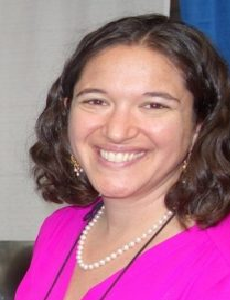 Every year on the second night of the NJTESOL/NJBE Spring Conference, the President organizes a President’s reception. This conference is an important part of the identity and vitality of NJTESOL/NJBE. It is through the conference that we get to connect personally with our many members, facilitate the sharing of ideas and practices, and bring in the revenue that allows us to be forceful advocates for our students and teachers throughout the year. During the annual evening President’s reception, we get the opportunity to provide recognition and resources to several deserving students and faculty. To me, the ability to do this is a major reason for the existence of our organization. We get to have a tangible impact on the academic trajectories of some great young students, and we recognize the contributions of our educators and supporters.
Every year on the second night of the NJTESOL/NJBE Spring Conference, the President organizes a President’s reception. This conference is an important part of the identity and vitality of NJTESOL/NJBE. It is through the conference that we get to connect personally with our many members, facilitate the sharing of ideas and practices, and bring in the revenue that allows us to be forceful advocates for our students and teachers throughout the year. During the annual evening President’s reception, we get the opportunity to provide recognition and resources to several deserving students and faculty. To me, the ability to do this is a major reason for the existence of our organization. We get to have a tangible impact on the academic trajectories of some great young students, and we recognize the contributions of our educators and supporters.
This year’s reception was exceptional because of our 50 year cELLebration. Our Vice President, Maggie Churchill, set up a selfie station with signs that said congratulations in many languages. The selfie booth really helped set the festive tone of the evening! Our Historian, Barbara Tedesco, who is a long time member of our organization and Past President, did a fabulous job of reaching out to our Past Presidents, many of whom made the journey to join us for our evening cELLebration.
This year, I am so proud that we were able to award a tablet to a 4th grader, a laptop to an 8th grader, and $14,500 in scholarships to high school students, newcomers, higher education students, graduate students, and teacher grants. It was an emotional evening of recognition with our students, parents, teachers, and our dedicated scholarship committee. NJTESOL/NJBE accepts donations targeted specifically to our scholarship funds. Through your donation, NJTESOL/NJBE offers you the opportunity to honor a friend or family member, whether for celebration or to send condolences. For donations of $25 or more, an acknowledgement card will be sent to whomever you choose. You can make a donation here.
During the President’s Reception, we also recognized our President’s Award recipient, Jacquelyn León and our Fred Carrigg Leadership Award, Elizabeth Willaum. Ms. León is a member of the New Jersey Department of Education and is a true champion for our bilingual students in New Jersey. Ms. Willaum is dedicated to supporting and promoting advocacy for dual language immersion programs. We also had a very special presentation by Barbara Tedesco. Elizabeth ‘BJ’ Franks, a Past President and our long time Advocacy Representative, was surprised when Mrs. Tedesco renamed our Advocacy Award the ‘BJ Franks Advocacy Award’. This was a very well deserved surprise! Dr. Franks then awarded the newly named award to Arthur Chou, who advocates for the biliteracy and dual language school movements.
We hope to see you at our President’s Reception in 2020!
Caia Schlessinger is the President of NJTESOL/NJBE and an ESL Teacher in the Highland Park School District. She can be contacted at cschlessinger@njtesol-njbe.org
 Vice President and Conference Chair
Vice President and Conference Chair
Conference Wrap-up
By Maggie Churchill
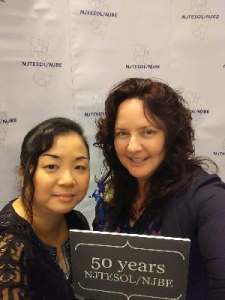 The 50th anniversary of NJTESOL/NJBE was cELLebrated in epic style at this year’s conference. Three days of keynotes, workshops, and special events filled the Hyatt, along with Past Presidents, scholarship winners, and dedicated educational professionals. What a sight it was to behold!
The 50th anniversary of NJTESOL/NJBE was cELLebrated in epic style at this year’s conference. Three days of keynotes, workshops, and special events filled the Hyatt, along with Past Presidents, scholarship winners, and dedicated educational professionals. What a sight it was to behold!
Wednesday’s special strand, Advocacy, was highlighted in Lisa Tabaku’s keynote on SIFE/SLIFE students. This was followed by a special symposium on Dual Language, orchestrated by NJTESOL/NJBE’S socio-political representative, Dr. Elizabeth Franks. To cap off the day, the Advocacy Summit featured state representatives, NJDOE staff, teachers of critical populations, and honored administrators.
Thursday featured the first-time offering of early bird sessions, which were a huge hit with attendees looking for practical classroom ideas. Sessions throughout the day focused on teaching language through content. For me, the highlight of the conference was meeting the eighteen Past Presidents of NJTESOL/NJBE, who attended the President’s Reception to celebrate our anniversary along with the scholarship winners. Personally, meeting Janet Sousi, our first president, accompanied by Fred Carrigg, namesake of our leadership award, made the evening a most memorable event.

Past Presidents of NJTESOL/NJBE
The annual NJDOE State Update revealed the latest ESSA guidance for districts. WIDA Presenters and representatives shared their expertise in assessment design and instructional practice over all three days. There was extraordinary variety in exhibitors and lucky raffle winners each day.
The photo booth was a phenomenal success and was used by attendees, families, and award winners. The 50th anniversary year conference was indeed a cELLebration to remember!
Maggie Churchill is the Vice President and Conference Chair of NJTESOL/NJBE. She can be contacted at mchurchill@njtesol-njbe.org
You May See Yourself
Past President
Developing a Pathway to Biliteracy
By JoAnne Negrin, Ed.D.
 In 2013, seven districts, including mine, embarked on a pilot program to introduce the Seal of Biliteracy to the state of New Jersey. This honor is bestowed upon high school graduates who pass both an ELA test required for graduation and a test in the World Language of their choosing. In January, 2016, Governor Chris Christie signed the Seal of Biliteracy into law. Today, there are over 100 school districts in New Jersey that participate in the Seal of Biliteracy initiative.
In 2013, seven districts, including mine, embarked on a pilot program to introduce the Seal of Biliteracy to the state of New Jersey. This honor is bestowed upon high school graduates who pass both an ELA test required for graduation and a test in the World Language of their choosing. In January, 2016, Governor Chris Christie signed the Seal of Biliteracy into law. Today, there are over 100 school districts in New Jersey that participate in the Seal of Biliteracy initiative.
Clearly, the Seal of Biliteracy has become a highly coveted honor among high school graduates. However, although our high school students were demonstrating great pride in their bilingualism, that enthusiasm was not matched in our elementary and middle school students. We decided we had to do something.
There were a few steps taken to address this challenge. One initiative was to write curriculum for a K-8 Spanish for Heritage Speakers program. This program provides reinforcement in areas of the language arts curriculum that our Spanish-speaking students find conceptually challenging. The program is mandatory for our bilingual classes, and is available as a source for differentiation in the Spanish classes that do not have students who are enrolled in the bilingual program. This helped us to provide native language instruction and reinforcement of key concepts.
The K-8 Heritage Spanish curriculum helped to fill gaps, but we wanted students to be proud of their home languages and have an incentive to maintain them (which is one of the reasons I am ambivalent about “graduation” ceremonies from ESL.) I am fortunate to have an elementary Spanish teacher, Caleb Howard, who was a finalist for ACTFL Teacher of the Year in 2017. One thing about great teachers is that they force you to bring your best self. He persisted in asking to implement an award celebrating students in the lower grades. Earlier this year, we convened a volunteer committee composed of elementary and middle school World Languages, ESL, and Bilingual teachers, plus the high school department head who was responsible for implementation of the Seal of Biliteracy. The committee decided that Pathways to Biliteracy was not glitzy enough, and our initiative was given the name Ambassadors of Biliteracy.
In an era of dwindling resources, we quickly concluded that we could not utilize the standardized online assessments that must be used for the Seal of Biliteracy. Furthermore, because our language programs are exploratory in K-8, students may not be able to express themselves fully in two languages. We also considered the many languages our students come to us with. We decided that we would ask students to write an essay of three paragraphs in 5th grade, five paragraphs in 8th grade. We provided several essay prompts in English and Spanish for the students to choose from. The essay application could be accessed via a Google Form, which made it easy to distribute across the district and to assess. Students were told that they could respond in the language of their choosing, but if the language was not English or Spanish, we asked them to indicate the English name of the language. This was a conscious decision designed to include and engage students who were native English speakers learning Spanish in school, native English speakers learning another language outside of school (e.g., Hebrew school), emerging bilinguals, or ELLs with greater literacy in the home language than in English. The link to the Google Form and accompanying rubric were made available via the website of each school for easy access by students and parents. We kicked off the contest with announcements on the closed circuit TV system, and by playing Mr. Howard’s video That’s What Language Does. Then we hoped for the best.
Our Ambassadors of Biliteracy committee worked hard to develop a rigorous rubric with clear delineations among levels of achievement. However, in any new initiative, there are early adopters and then there are some who join the bandwagon later. Some schools (notably, those with a teacher on the committee) sent in many entries. Other schools sent none. Given the uneven participation, we decided that the best thing to do this year was to adjust the criteria so that any student who wrote an essay of the required length that was more or less on the mark got a certificate. We decided we wanted to generate buzz, and we can always refine our criteria in the future as we get more entries. As it was, 40 students submitted an entry, and we awarded 20 Ambassador of Biliteracy certificates across three schools.
Here is an example of a fifth-grade essay:
Why is it important to speak more than one language? Please give three examples from your own life.
I know more than one language I know English, Hindi and Gujarat I was also born in India. Today I am going to tell you about how learning or knowing more than one language can help you in your life. So when we moved to America my parents relied on me and my sister to grow up and learn how to speak english because they did not know how to speak english. So when I grow up I had to translate english to like an uber driver when we didn’t have a car and I had to translate to their boss what they were saying.
Me and my sister also had a lot of work on our back because we had to go to school and learn english and when we came back home most of the time we had to do some work for our parents like call the bill companies to make sure we pay our bills and stuff like that. We also had to do projects so when I first came to America I got put in a english school but there was a girl that spoke Hindi and we had a project coming up and at that time I did not know that much english at all. So the day after the project got given out then at lunch I went to the girl that knew how to speak hindi. She helped me do my project that is how me knowing english and hindi helped me in school and at home.
So when I was in about 4th grade I meet this Indian girl named Ayushi and my sister name was Ayushi also so I helped her with her project. She was in 2nd grade I asked the teacher and the teacher said yes. So then we got started this project was almost during the end of the year. So after that I helped her with the project and she actually got a 98 on the project. But that was the last year because she moved and so did I. That are all the ways that knowing how to speak different languages helped me to learn new languages.
By Alop Patel, Age 12, Mennies Elementary School, Vineland, NJ
(Note: this essay has not been edited in order to preserve the integrity of Alop’s submission)
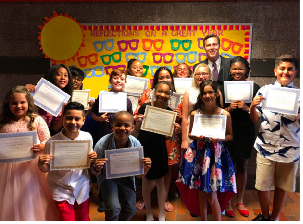
Mennies Elementary School Ambassadors of Biliteracy with their Spanish teacher, Mr. Caleb Howard. Mr. Howard was FLENJ and NECTFL Teacher of the Year and an ACTFL Teacher of the Year Finalist in 2017.
This was our first year piloting the Ambassadors of Biliteracy program, and we learned a great deal in the process. We are going to start talking up the Ambassadors of Biliteracy initiative earlier in the year to get students excited. I am going to focus on rallying our bilingual school, which did not submit any essays at all this time. I will do some outreach to our special education staff to get input as to potential accommodations and modifications we may need to offer in order to be fully inclusive. We may also need to reword our instructions and prompts, as half of the fifth graders did not follow them.
Our Ambassadors of Biliteracy pilot went pretty much the same way as the state pilot did. We started small and learned from the experience. I hope that we continue to apply what we learn to making our Ambassadors of Biliteracy program bigger and better, so that all of Vineland’s students recognize the importance of growing up bilingual and proud.
JoAnne Negrin, Ed.D. is the Supervisor of ESL, Bilingual Education, World Languages, and Performing Arts for the Vineland Public Schools. She is also Immediate Past President of NJTESOL/NJBE and the NJPSA ELL Committee Chair.
Past-President
Celebrating our One in a Billion
By JoAnne Negrin, Ed.D.
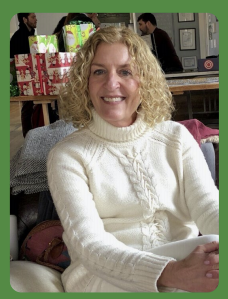 Earlier this year, a call went out from WIDA for nominations to their first ever WIDA Fellows program. The application process was arduous for both the nominator and the nominee, including items like a statement of commitment and a five-minute video. The contest was not only open to educators in the 37 U.S. states that are adherents to the WIDA Standards, but also to educators across the globe. Seven WIDA Fellows were chosen. I am delighted to report that NJTESOL/NJBE Executive Board member Sonya Bertini was one. A quick Google search reveals that there are roughly seven and a half billion people on the planet. You do the math…she is actually somewhat rarer than one in a billion.
Earlier this year, a call went out from WIDA for nominations to their first ever WIDA Fellows program. The application process was arduous for both the nominator and the nominee, including items like a statement of commitment and a five-minute video. The contest was not only open to educators in the 37 U.S. states that are adherents to the WIDA Standards, but also to educators across the globe. Seven WIDA Fellows were chosen. I am delighted to report that NJTESOL/NJBE Executive Board member Sonya Bertini was one. A quick Google search reveals that there are roughly seven and a half billion people on the planet. You do the math…she is actually somewhat rarer than one in a billion.
Sonya Bertini is a Bilingual Special Education Teacher at Vineland High School. She teaches all core subjects to a student population that is, as she says, doubly special. Her classroom is the kind of classroom that you don’t want to leave, but when you do, you leave feeling pride in our schools and incredible optimism that someone of her skill and dedication is sending these children to meet their futures so well prepared. In her spare time, she has served for the past four years as the Special Education Interest Group Representative for NJTESOL/NJBE, the state organization of ESL and Bilingual educators. For the next two years, she will be serving on the New Jersey Department of Education Bilingual Advisory Committee. She has touched the lives of not only her own students, but also of thousands of children she will never meet.
Being a WIDA Fellow is not a situation where you get your photo taken with a plaque and go home. They are going to put her to work. She will be providing practitioner feedback on various initiatives and materials, and she will be featured as an exemplar of practice in training videos. In doing so, she will have the opportunity to help many more teachers and students for years to come.
JoAnne Negrin, Ed.D. is the Supervisor of ESL, Bilingual Education, World Languages, and Performing Arts for the Vineland Public Schools. She is also Immediate Past President of NJTESOL/NJBE and the NJPSA ELL Committee Chair.
Advocacy Corner
Increasing ELs’ Participation in the Seal of Biliteracy
By Elizabeth (BJ) Franks
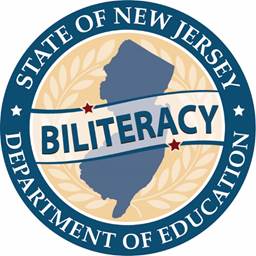 When the Seal of Biliteracy was introduced in NJ, the hope was that it would be a win-win initiative for both English speakers, English Learners and Heritage Speakers. Unfortunately the data indicate that the majority of recipients are English Speakers who study a World Language. In a recent webinar, I discussed the challenges and possible solutions to this issue. Challenges and Concerns:
When the Seal of Biliteracy was introduced in NJ, the hope was that it would be a win-win initiative for both English speakers, English Learners and Heritage Speakers. Unfortunately the data indicate that the majority of recipients are English Speakers who study a World Language. In a recent webinar, I discussed the challenges and possible solutions to this issue. Challenges and Concerns:
- ELs must climb a higher bar to earn the honor. The criteria for earning the Seal holds English-learners to a higher standard in their second language (English) than native English speakers are held in theirs.
- Some districts pay for the assessments while others ask the parents and students to pay for the assessment. Low-income students may be foreclosed from participating.
- Formal exams are often limited to languages studied in U.S. high school world-language classes: AP and the College Board offer tests in fewer than 10 languages. The American Council of Teachers of Foreign Languages has exams in a dozen languages.
- In nearly every state that offers the Seal, few are tracking who earns them.
- There is also a need to know how many English-learners are reaping potential benefits, such as earning college credits or a boost in the job market.
Possible solutions can occur at various levels: Local school districts:
- Bilingual/ESL high school teachers and supervisors need to advocate and encourage advanced and former ELs to participate in the Seal of Biliteracy.
- Survey student population and identify heritage speakers. Encourage these students to participate.
- Ensure that students can test in home languages that are not offered as classes; such as Gujarati, Turkish, and Japanese
- Broadcast that loudly to attract more English Learners and heritage speakers.
- Encourage districts to create Pathways to Biliteracy
- Recent Seal of Biliteracy graduates can share stories about how the Seal of Biliteracy has impacted them.
- Create Public Service Announcements to be shared with community agencies, and various media outlets
At the NJ Department of Education:
- Track and publish the demographics and achievements of the Seal of Biliteracy recipients.
- Allow districts to create local assessments in the low incidence languages and submit for DOE approval. The DOE could then become a warehouse for these other languages.
- The NJDOE can urge test developers (STAMP, AAPPL) to create assessments in more languages (use the language survey to determine top 10 languages or set a threshold of numbers of speakers that will prompt development of assessments in those languages).
- Collaborate with other states to share assessments. Washington state has Vietnamese, Somali, Punjabi, Tagalog, Romanian, and Amharic.
Colleges and universities:
- Grant college credit for attainment of the Seal of Biliteracy.
- Actively recruit Seal of Biliteracy recipients across all majors (business, health, psychology, social sciences). In particular, Teacher Education programs need to attract candidates to fill the certified bilingual teacher shortage.
- Colleges and Universities could offer a Seal of Biliteracy at collegiate level.
Professional organizations:
- NJTESOL/NJBE offers a $2000 scholarship for a current or former English Learner who attains the Seal of Biliteracy.
- Praxedes León Parent Award for $500 is given to the parents of the Seal of Biliteracy Scholarship winner
- Each year, NJTESOL/NJBE recognizes a Superintendent who is committed to creating pathways to the Seal of Biliteracy for heritage language students, and current and former English learners.
- 2016 Dr. Danny Robertozzi – Linden
- 2017 Dr. Mary Gruccio – Vineland
- 2018 Dr. David Roman – Perth Amboy
- 2019 Dr. John Ravally – Franklin Township (Somerset)
Legislation:
- Replicate effort in Washington state, by launching a campaign, to request funds to cover language-proficiency testing fees for low-income students, which would open avenues for all students to demonstrate their fluency in their home languages
- Develop and offer grants for schools and districts to develop Dual Language programs
- Pass a law that would mandate that colleges and universities grant college credit for Seal of Biliteracy recipients
Collaboration across levels: Most importantly, we need to collaborate across levels to ensure that current and former English learners are provided access to attain the Seal of Biliteracy. Since it is a voluntary process, schools districts must opt in to the program and submit an application in the fall. Supervisors and teachers need to advocate for equity of opportunity by providing multiple pathways to demonstrate proficiency as a road map to visually show students how they can use the Seal as a pathway to become a bilingual teacher. Together, districts can create a video of former recipients who discuss the impact of receiving the Seal of Biliteracy. We need to highlight business community representatives who discuss the value of the Seal of Biliteracy. So let’s work together to show the assets of our students and help overcome these obstacles.
Elizabeth Franks is the Advocacy Representative of NJTESOL/NJBE.
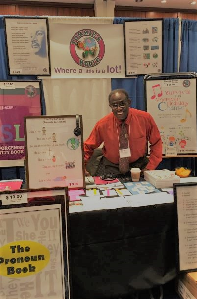 Historian
Historian
Highlighting a NJ Author
Barbara Tedesco
First, I want to apologize for my omission of not remembering to include Tommie A. Shider among my list of authors in the last issue of Voices. To make up for this, I am highlighting him here.
I first met Tommie through M. Eileen Hansen, past-president 1981-1983 who was teaching at Rutgers University where Tommie received his M.A. in Language Education. The Plainfield native was an ESL teacher at all grade levels in the New Brunswick Public Schools up until his recent retirement. He also served there as an ESL Specialist responsible for Placement and Testing of all new entrants (English and Spanish) as well as assisted teachers with innovative teaching strategies and organized activities for the Bilingual Parent Council.
Throughout his life Tommie was influenced by his musical family, namely his brother Gary. This led him to bring music into his teaching. As any of us who have ever integrated music into the curriculum know, there is a positive impact on English Learners of all ages. This leads me to tell you about Tommie as singer, songwriter and arranger who has produced several CDs and has written three books, “The Pronoun Book”, “The “ESL Reinforcement Activity Book” and his latest, “Survival and American Holidays Chants” available at Amazon, iTunes and Barnes and Noble.
Tommie’s first solo acapella CD release is entitled, The Tommie Shider: Me, Myself and I Collection. He is currently performing with the legendary Willie Winfield of the Harptones, famous for the song, “Life Is But a Dream”.
He had a display at the NJTESOL/NBE conference under the banner of Tommie’s World. I do hope you stopped by.
I think I speak for many, if not all, for his contributions to our organization and to the field of Bilingual/ESL in New Brunswick, New Jersey and beyond. With that “song in your heart”, I hope Tommie keeps producing and performing.
Barbara Tedesco is the NJTESOL/NJBE Historian and Co-manager of LLAMAME, LLC.

Guest Contributors
Co-Teaching 101:
Our Experiences and Reflections on Co-Teaching in High School
By Maureen Guzman and Craig Lewis
One of the best things about having a co-teacher is that it allows you to leave your classroom knowing that there is another reliable adult in the classroom with your students. Craig and I have been co-teaching for four years, and if there is something that we have both found to be an advantage is that there is another reliable and trustworthy adult in the classroom at all times. Whether we have to go to the restroom or speak to a student outside or one of us is out of the building attending a professional development, we can be comforted to know that a dependable individual ensures our students stay on track. Although our students truly dislike the fact that one of us is always in the room. We rarely have a substitute because we would both have to be absent and as we tell our students “the stars, the universe, and all of the planets and non-planets have to be aligned” for both of us to be away from the classroom.
Craig and I have been fortunate with regard to our co-teaching relationship. Our partnership has been a positive learning experience for not just the students, but for each other. We have enriched our learning through co-teaching and have been able to benefit professionally and personally from this experience. We realize not every teacher has had a positive co-teaching experience and some partnerships are tumultuous or put simply, a disaster; which, in turn, only affects the students. Both of us have had co-teaching experiences where we just have not gotten along with our co-teachers, but we have had to make it work for the benefit of the students. We have found that setting clear expectations with challenging co-teachers has brought about a much better experience in the classroom for the students. Setting clear expectations in terms of discussing with your co-teacher teaching philosophies, classroom rules or classroom management supports the learning even when you simply do not get along with your co-teacher or your personalities do not mesh well. The students do not need to figure out that these two teachers do not like each other on a personal level, as long as the learning in the classroom is evident through student engagement.
When we have presented our co-teaching PD at NJTESOL/NJBE, we are always asked about how we can co-teach if one of us is not an expert or certified in the content area. Our answer is always the same “if you choose to be passive about learning the content, you will become passive in the classroom.”
I have had to learn content areas such as Physics and History to teach them. In turn, Craig has had to learn about Language Arts and ESL to teach them, but most importantly, to support our students. Coincidentally, the strategies used for ESL students benefit ALL students. Our Co-teaching partnership has blossomed after four years, but several traits remain the same. First, we have never referred to the students as your kids and my kids; we have always referred to them as our kids. Second, the students do not catch on until the end of the year, or never that one of us is the history teacher, and one of us is the English or ESL teacher; we are referred to as, my history teachers. Lastly, our partnership would not work if we were both not invested in advocating for ALL of our students. And one more thing; we truly love what we do. It is a cliché, but for us, it supports our co-teaching partnership!
Maureen Guzman is an ESL teacher and Craig Lewis is a history teacher at Franklin High School
 Exhibitor Liaison NJTESOL/NJBE
Exhibitor Liaison NJTESOL/NJBE
Thanks for the Magic And An Emotional Goodbye
Tina Kern
The room seemed small – or was it deceptively large? I walked the room around the perimeter, around and around, from one end to another. The emptiness loomed, and the carpet muffled any sounds. It seemed so ordinary.
It was almost exactly one year since I “walked the room” in the Atrium at the Hyatt Regency in New Brunswick, NJ. How could it be the end of April again? I paused and scanned the room, moving objects to check where we had electric and columns and imagining tables being placed in various spots, while envisioning the activity that was not evident that spring day but would begin in just a short time.
This is one of the ways that the “magic” that becomes our conference begins. Behind the scenes, we plan, visualize, email each other back and forth, worry, email again, and bite our lips as we check the mental lists, and hope that we included everyone and everything. We painstakingly check details so that our conference remains one of the best state conferences for another year, and for years after that. My specific job that day in April was to help create a plan for the tables and booths with the professional group we hire so that every sign, every table, and every curtain is placed so that our exhibitors can showcase their material to our members. I took another Advil as I looked at the list of names and reservations, again perseverating over the tiniest detail so that, on conference day, no one was forgotten.
During the conference, two rooms are transformed for the three days, and the empty rooms are filled with people, satisfied conversation, excitement, and satisfaction when finally we visit the exhibitors and find just the right book, or technology, that will enhance our teaching and delight our students.
Our many thanks to our exhibitors, but especially to our sponsors who support our educators and students with enthusiasm.
Here are descriptions from our 2019 sponsors that I enthusiastically share with you.
Our Platinum Sponsor: Lectura Books/ The Latino Family Literacy Project Lectura Books publishes award-winning bilingual and bicultural children’s books. The Latino Family Literacy Project is their award-winning and research-based parent program for English Learners and is a White House Bright Spot Award winner for Educational Excellence with Hispanics. Their books, curriculum, and professional development for school staff have been offered in 20 states and help Hispanic parents learn how to read with their children, build vocabulary, learn English skills, and increase college awareness. In-person district workshops or online webinar trainings are available for Infant/Toddler, Preschool, Elementary family reading programs and Middle and High programs for college awareness. https://www.lecturabooks.com By the way, we were just mentioned in this Publisher’s Weekly article: http://bit.ly/31mjB2j
Our Silver Sponsors: (in alpha order)
American Federation of Teachers New Jersey The American Federation of Teachers New Jersey represents 30,000 education workers from prekindergarten through 12 and in higher education. A union of professionals, AFTNJ facilitates ongoing professional development to help educators be as effective as possible in meeting the needs of students. Learn more about AFTNJ at www.aftnj.org and visit Share My Lesson for more than 400,000 free Toddler to Grade 12 resources.
Benchmark Education Company Benchmark Education is committed to creating culturally sensitive resources for diverse students. We are guided by a steadfast belief that literacy skills open doors and launch students into a lifetime of opportunity. Our award-winning resources continue to expand in print, online, and in blended formats, and for both core and supplemental classroom use. We offer top quality ESL/ELD and Spanish resources, which will help your students develop the literacy skills, academic vocabulary, and content understanding they need to succeed.
Big Brain Resources / Capstone We provide exclusive products and promotions, knowledgeable and personal service, the best choices in the industry, cutting-edge on new technology, shelf-ready processing and the best prices available. BigBrain Resources specializes in non-fiction, curriculum and digital resources for the New Jersey, PA and New York metro area. We are your source for the best in library publishing and classroom curriculum needs at the lowest cost.
GrapeSEED GrapeSEED is a unique, research based, teacher led oral language acquisition program designed to help young students and newcomers acquire the English language faster and at a higher level of proficiency than traditional methods. Used in 17 countries worldwide, GrapeSEED students learn English in a fun and engaging way that quickly builds confidence using the Natural Approach to learning. GrapeSEED’s curriculum seamlessly integrates Vertical Phonics, the Functional-Notional Approach, a Controlled Vocabulary, Language Arts Skills that support the development of oral communication ability, and the opportunity for Repeated Exposure and Practice to accelerate English language proficiency.
Learning A-Z Raz-Plus ELL Edition from Learning A-Z delivers an extensive collection of instructional resources, assessment and reporting tools, and an engaging student-facing environment to strengthen the connection between what is being taught and what students are practicing. Including thousands of resources designed specifically to support ELL/ESL students and Spanish resources ideal for dual-language and bilingual classrooms, Raz-Plus ELL Edition can help you improve the literacy skills of every student, at every level. Try it free for two weeks: https://www.learninga-z.com/azm/NJTESOL19
Lectorum Publications Inc. Lectorum Publications is the oldest and largest Spanish Language books distributor in the U.S. Our library collections in Spanish, English, and Bilingual, for grades Prek-12, enhance and motivate learning all the while including children’s backgrounds, their heritage, culture, and linguistic differences.
Okapi Educational Publishing Okapi’s stellar lineup of English and Spanish leveled texts has at its core a solid base in literacy research, adherence to best teaching practice, and the ease-of-implementation that will have your classrooms experiencing real and lasting achievement! Built with lesson supports for second language learners.
Consider reaching out to these wonderful exhibitors when you need something for your classroom. Many customize and help you design just the right combination of material to maximize your teaching and supercharge your students. I have used much of their materials, and personally endorse all of them. They will come to your schools and present what they have to meet your needs, and even beyond that.
Please contact me should you need any advice about materials for your students. Our wonderful exhibitors and sponsors have material and technology that have enhanced my classroom and allowed me to individualize, diversify and add meaningful materials to my lessons My experience is elementary, middle school, high school and college, so I look forward to helping you find the books, classroom libraries, technology or other material that will make your lessons shine on all levels. I’m here for you. I look forward to helping you and sharing with you, so reach out to me at exhibitor-liaison@njtesol-njbe.org.
An Emotional Goodbye:
On another note, I am saying goodbye to one of the last “original” students from my first group of students that I met when I first was transferred to teaching at the high school. These students had a long journey from their countries and walked across the Mexican border into the arms of immigration officials. Some were unaccompanied minors, and some would reunite with their mothers after at least 12 years. They tried to integrate into a “new family” and a new culture while going to school and often working many long hours to help support themselves and their families.
“Jorge” has had an overwhelming, challenging experience but successfully graduated in June. With tears in my eyes and a choked voice, I said, “See you soon” to a tenacious individual who is a success story. My original students carried scars inside and out that colored every aspect of their lives. Some could not adjust to the rules that were thrust upon them, and some reluctantly adhered to the changes that would ultimately shape their new lives. One by one, they passed through our lives, until the youngest, “Jorge,” finally came to what become one of the most emotional and important days ever. The work we do continues, and moments like this sustain us. Good luck, “Jorge,” and to all of the others that have passed through our classrooms, “Buena Suerte!”
Tina Kern teaches in the Morristown Public Schools
Technology Guest Contributor
Using Technology in the Classroom
By Ana Maria Cunha
As I was stopping in at the various workshops while I was helping with technology at the Spring Conference, I saw a little of Ana Maria Cunha’s presentation and asked her to write the technology article for this issue of Voices. I’m sure you’ll be glad that she agreed. Marilyn Pongracz, NJTESOL/NJBE Technology Coordinator
Hari Krishna Arya, India, said, “Teachers will not be replaced by technology, but teachers who do not use technology will be replaced by those who do.” I try to use as much 21st-century technology as possible. In my class, I use ClassDojo, which is a website and application that allows students to take their own attendance as they walk into my room. ClassDojo is projected on the board and is used daily; not only for attendance but, for awarding/subtracting reward points, behavior, and randomly choosing students. I utilize ClassDojo to communicate with parents, share photos, news, and student portfolios.
Splashtop gives me remote access to my computer. I use a tablet to connect to my desktop while I walk around the room, checking what students are doing. As I teach, it gives me the ability to write on the board, change slides, or open/close folders on my desktop, while standing in the back of the room, walking around, or stand next to students; I am not limited to standing in front of the board or at my desk.
Kahoot and Quizlet have great games that motivate students. They have to pay attention to play. They can be used in individual or group competition and as an assessment. I use them as a review before a test or as a time filler. They are quick and easy to create, and students ask to play often. You can create your own game or search for one that someone else has created.
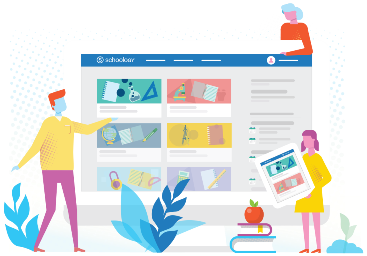 Schoology is an educational, social networking service. It provides teachers with the tools to manage an online classroom. I use it instead of Google Classroom; I like that I can organize material by folder, and archive it till the next year. I create once and reuse the following year. All assignments are posted, and students submit their work on it. It has a calendar, so students know what and when an assignment is due and shows if they submitted late or on time. I have also used Socrative as an assessment tool. It provides real-time results, student understanding, fast, automatic grading, reports by email, and promotes student engagement.
Schoology is an educational, social networking service. It provides teachers with the tools to manage an online classroom. I use it instead of Google Classroom; I like that I can organize material by folder, and archive it till the next year. I create once and reuse the following year. All assignments are posted, and students submit their work on it. It has a calendar, so students know what and when an assignment is due and shows if they submitted late or on time. I have also used Socrative as an assessment tool. It provides real-time results, student understanding, fast, automatic grading, reports by email, and promotes student engagement.
Some other useful resources I try to use are Khan Academy, which offers free tutorial videos and exercises for most subjects for grades K-12. Khan gives teachers the option to create a class or just have students watch the videos on YouTube. I also use NoRed Ink; it helps improve grammar and writing skills. It is differentiated to students and uses student interests (which the students set up) in the lessons. Students find the errors and make the corrections.
I use Duolingo with beginners to help with the four domains; reading, writing, listening, and speaking. Duolingo is free, and students have to master one topic to move to the next.
The district has purchased Achieve 3000, which is online differentiated instruction that helps students improve Lexile levels. The placement test at the beginning will place the student at the appropriate level. Achieve can be used from grades 1-12. Achieve has been very beneficial to students; especially with standardized testing.
My beginners have to interview school personnel after a lesson, and then use Pixton comics to create a comic book with the information from the interviews. Marvels comic creator, and Toondoo are other good options. iMovie and Movie Maker can make movies or slideshows. My advanced students are experimenting with recording themselves in front of a green screen (a green cloth sheet) then insert the background they are explaining. They add transitions, background music, and special effects.
I also use Quick Response codes (QR codes) for students self-assessment with literary elements, time, money, and shapes. QR codes have many uses. They can be used for scavenger hunts, as additional support, and to supply parents with information.
Keeping in contact with students and parents is done in my class using Remind. Students and parents sign up, and we can text each other at any time. I can send out a group message or an individual message or reminders. Both numbers are private; the students do not see my number, and I do not see theirs, and it’s quicker than email.
My students have also experienced augmented reality, virtual reality, and mixed reality. For example, one beginner uses the Samsung Gear VR and tells other students what they see; setting, colors, image, prepositions of location, and direction; just to name a few. The Intermediate level students read an article on King Tut, and then took a virtual trip to Giza and a tour to Tut’s tomb. My Advance students read “The Girl with the Pearl Earring,” completed their research and project about 18th-century painters, and then were able to virtually visit Van Gogh’s bedroom, and Amsterdam. Google Expeditions and Unimersiv are also other usable virtual resources. Students have explored space and the solar system. I have my own VR and mixed reality visors since the students can not use their own phones. I purchased them on Amazon. In the future, I plan on making a wish list on DonorsChoose.
Over the years, I have accumulated a list of websites that help prepare students for the WIDA ACCESS 2.0 assessment. Students use them throughout the year. Students use speed reading links; some with comprehension questions at the end, some you paste your own text to read it aloud. Students also use links I’ve found for Listening activities as well as Speaking. The list is too long to mention.
Most if not all of these resources can be used by elementary to the high school level. The challenge I’ve encountered is time; sometimes, there isn’t enough to implement everything the way I would like to.
With such an abundance of technology available, we must keep in mind what John Dewey said, “If we teach today’s students as we taught yesterday’s, we rob them of tomorrow.”
Ana Maria Cunha teaches ESL Grades 9-12 at Carteret High School.
Guest Contributor:
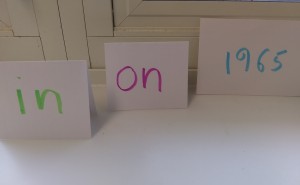 What does “in” mean?
What does “in” mean?
By Jeffrey Linn
It is probably true that we don’t consciously think about the meaning of “in” when we are uttering a complex sentence with “in” as part of a prepositional phrase.
But does the meaning of “in” guide its usage, or is it merely a grammatical or idiomatic choice?
What does “in” mean?
As opposed to “on” or “at”, “in” carries the idea of engulfing.
at 5:15 is very point-in-time oriented. on supports timeline locations: on Friday, on the 15th. in supports time durations that can engulf us: in five minutes, in 1965.
There are feelings or states that can also engulf us: in a rage, in sickness and in health, where the meanings of on or at would not be appropriate. The following are examples where a simple substitution of the preposition results in significant consequences in message.
The gift is for you. [Aren’t you happy?] The gift is on you. [Perhaps you have to pay for it.] The gift is in you. [You have a special ability or skill. Or someone has gifted you a pacemaker.]
In all of these, we can feel the core meaning of each preposition driving the message of the sentence. This morning I got stuck in traffic. We infer that other vehicles surrounded my auto from the core meaning of in. With many, many uses of in, we can see the core meaning of engulfed by being exploited to create the overall message:
I read it in a book. I saw it in a movie. How do you say that in French? You need to put that in writing.
However, there are going to be some instances where the extrapolation of the core meaning is not clear, and the reference to the core meaning of in instruction should not then be made. Also, PL levels 3 and 4 students will probably not often struggle with such choices. But for PL levels 1 and 2 students, showing how the core meanings of prepositions guide their use in more abstract situations might be helpful to aid memorization and confidence in application.
for More about English Language Learners of All Ages
 The 50th anniversary of NJTESOL/NJBE was cELLebrated in epic style at this year’s conference. Three days of keynotes, workshops, and special events filled the Hyatt, along with Past Presidents, scholarship winners, and dedicated educational professionals. What a sight it was to behold!
The 50th anniversary of NJTESOL/NJBE was cELLebrated in epic style at this year’s conference. Three days of keynotes, workshops, and special events filled the Hyatt, along with Past Presidents, scholarship winners, and dedicated educational professionals. What a sight it was to behold!

 As the school year ends, there are so many things to cELLebrate around ESL and Bilingual education in New Jersey. Here at NJTESOL/NJBE, we continue to feel the jubilation as we reflect on our 50th Anniversary and the work that we have done to support ESL and Bilingual students. As the editor of Voices, I would first like to cELLebrate and give accolades to the leadership team who made our conference a success again this year! First to our Conference Chair Maggie Churchill and Liaison Tina Kern, who worked tirelessly to bring together a line up full of relevant and insightful professional development and exciting vendors. I also would like to recognize the entire Executive Board for their work this year. Next, I feel a need to say how thankful I was to meet many past presidents who attended the conference this year! Talking with the leaders of the past who have led the way within our profession was uplifting to say the least. Finally, a big thank you to all who attended especially to those who presented workshops and those who nominated students for our annual scholarship search. It is an honor to be able to award money to so many young people who have gained English proficiency and demonstrated academic success here in New Jersey.
As the school year ends, there are so many things to cELLebrate around ESL and Bilingual education in New Jersey. Here at NJTESOL/NJBE, we continue to feel the jubilation as we reflect on our 50th Anniversary and the work that we have done to support ESL and Bilingual students. As the editor of Voices, I would first like to cELLebrate and give accolades to the leadership team who made our conference a success again this year! First to our Conference Chair Maggie Churchill and Liaison Tina Kern, who worked tirelessly to bring together a line up full of relevant and insightful professional development and exciting vendors. I also would like to recognize the entire Executive Board for their work this year. Next, I feel a need to say how thankful I was to meet many past presidents who attended the conference this year! Talking with the leaders of the past who have led the way within our profession was uplifting to say the least. Finally, a big thank you to all who attended especially to those who presented workshops and those who nominated students for our annual scholarship search. It is an honor to be able to award money to so many young people who have gained English proficiency and demonstrated academic success here in New Jersey. Every year on the second night of the NJTESOL/NJBE Spring Conference, the President organizes a President’s reception. This conference is an important part of the identity and vitality of NJTESOL/NJBE. It is through the conference that we get to connect personally with our many members, facilitate the sharing of ideas and practices, and bring in the revenue that allows us to be forceful advocates for our students and teachers throughout the year. During the annual evening President’s reception, we get the opportunity to provide recognition and resources to several deserving students and faculty. To me, the ability to do this is a major reason for the existence of our organization. We get to have a tangible impact on the academic trajectories of some great young students, and we recognize the contributions of our educators and supporters.
Every year on the second night of the NJTESOL/NJBE Spring Conference, the President organizes a President’s reception. This conference is an important part of the identity and vitality of NJTESOL/NJBE. It is through the conference that we get to connect personally with our many members, facilitate the sharing of ideas and practices, and bring in the revenue that allows us to be forceful advocates for our students and teachers throughout the year. During the annual evening President’s reception, we get the opportunity to provide recognition and resources to several deserving students and faculty. To me, the ability to do this is a major reason for the existence of our organization. We get to have a tangible impact on the academic trajectories of some great young students, and we recognize the contributions of our educators and supporters. Vice President and Conference Chair
Vice President and Conference Chair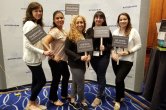
 In 2013, seven districts, including mine, embarked on a pilot program to introduce the
In 2013, seven districts, including mine, embarked on a pilot program to introduce the 
 Earlier this year, a call went out from WIDA for nominations to their first ever WIDA Fellows program. The application process was arduous for both the nominator and the nominee, including items like a statement of commitment and a five-minute video. The contest was not only open to educators in the 37 U.S. states that are adherents to the WIDA Standards, but also to educators across the globe. Seven WIDA Fellows were chosen. I am delighted to report that NJTESOL/NJBE Executive Board member Sonya Bertini was one. A quick Google search reveals that there are roughly seven and a half billion people on the planet. You do the math…she is actually somewhat rarer than one in a billion.
Earlier this year, a call went out from WIDA for nominations to their first ever WIDA Fellows program. The application process was arduous for both the nominator and the nominee, including items like a statement of commitment and a five-minute video. The contest was not only open to educators in the 37 U.S. states that are adherents to the WIDA Standards, but also to educators across the globe. Seven WIDA Fellows were chosen. I am delighted to report that NJTESOL/NJBE Executive Board member Sonya Bertini was one. A quick Google search reveals that there are roughly seven and a half billion people on the planet. You do the math…she is actually somewhat rarer than one in a billion. When the Seal of Biliteracy was introduced in NJ, the hope was that it would be a win-win initiative for both English speakers, English Learners and Heritage Speakers. Unfortunately the data indicate that the majority of recipients are English Speakers who study a World Language. In a recent webinar, I discussed the challenges and possible solutions to this issue. Challenges and Concerns:
When the Seal of Biliteracy was introduced in NJ, the hope was that it would be a win-win initiative for both English speakers, English Learners and Heritage Speakers. Unfortunately the data indicate that the majority of recipients are English Speakers who study a World Language. In a recent webinar, I discussed the challenges and possible solutions to this issue. Challenges and Concerns: Historian
Historian

 Schoology
Schoology What does “in” mean?
What does “in” mean?